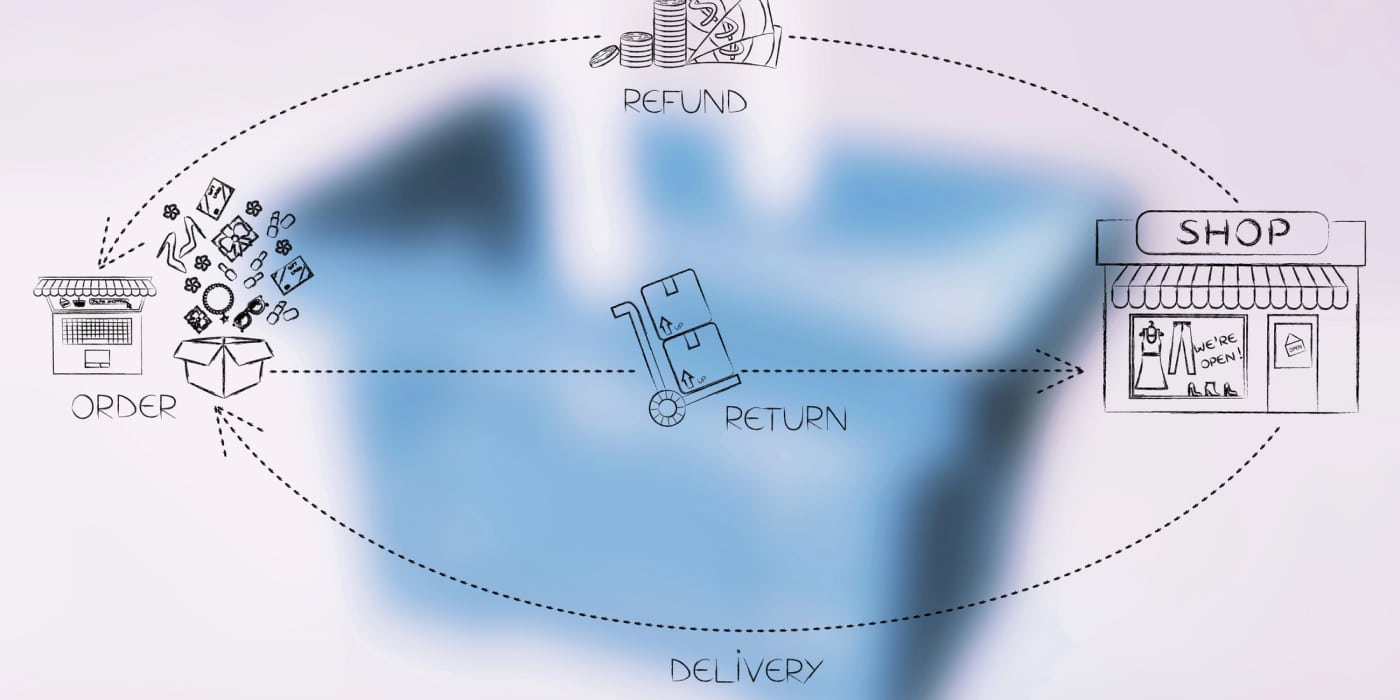Reverse Logistics in Retail: Turning Returns Into a Competitive Advantage
As eCommerce continues to grow, product returns have become a costly challenge. Total returns for the retail industry amounted to $685 billion worth of merchandise in 2024, representing 13.21% of total retail sales ($5.19 trillion), according to a report from Appriss Retail, in collaboration with Deloitte. By managing reverse logistics efficiently, retailers can enhance customer loyalty and differentiate themselves in a crowded market. Whether you’re an eCommerce brand or an omnichannel retailer, investing in your return processes can lead to long-term gains.
Here’s how retailers can turn returns from an operational challenge into an opportunity to improve operations, boost customer relationships, and enhance profitability.
Simplify the Returns Experience
Returns play a significant role in purchasing decisions, with complex return policies discouraging repeat transactions, according to a recent report from FedEx. The report found that 97% of consumers have abandoned purchases due to an inconvenient shopping experience. The easier it is for customers to return items, the more confident they will feel about purchasing them. Confusion around returns creates customer frustration and clogs customer service channels. A streamlined returns experience reduces friction, speeds up reverse logistics, and enhances customer satisfaction.
Implementing clear, easy-to-follow return policies can improve the returns process. Make return windows and refund policies transparent by showing return information on product pages, in post-purchase emails, and inside packaging. Provide customers with flexible return options (in-store, mail, pickup) so they can choose a way that best suits their needs. Self-service return portals that generate pre-approved return authorizations, prepaid labels, and let customers select return reasons or request exchanges adds structure to the process and speeds up reverse logistics workflows for faster return processing.

Leverage Technology for Improved Transparency
One of the most frustrating experiences for a customer initiating a return is being left in the dark, unsure if the return has been received, when a refund will be issued, or where the item is in the reverse supply chain. Transparency in reverse logistics not only enhances the customer experience but also improves operational efficiency and decision-making. Just as customers expect to track their deliveries, they now expect the same visibility when returning products.
Eighty-two percent of consumers said that having access to real-time tracking of their return status was somewhat and very important to them, according to a study by Narvar and Reshop. Implementing return tracking systems allows customers to receive confirmation that their return has been initiated and track the item’s journey back to the warehouse or store. Integrating return tracking with SMS or email notifications adds a proactive communication layer that keeps customers constantly updated, providing reassurance and building trust.
Optimize Reverse Supply Chain Operations
Manual sorting of returns can be slow, error-prone, and expensive. Automated systems can help retailers streamline returns processing, manage returns more efficiently, and enhance workforce productivity. Oxford Industries recently selected warehouse robotics provider Exotec to automate its new distribution center in Lyons, Georgia. Oxford Industries owns several apparel brands. The new facility will support receiving, sorting, packing, outbound shipment, and reverse logistics, cutting the amount of time and labor needed to inspect, sort, and store returned items.
Often, reverse logistics is siloed from forward logistics, leading to duplicated systems and missed opportunities. If you operate an in-house delivery fleet, you can use it for both deliveries and return pickups. Offering scheduled return collections boosts convenience for customers and adds value to your last-mile infrastructure. Return pickups during idle times or bundling return trips with new deliveries can help lower costs and improve fleet utilization. If managing an in-house fleet isn’t feasible, consider outsourcing to third-party logistics providers that specialize in reverse logistics. They can offer specialized processing centers for returns, refurbishment and resale support.
By streamlining the returns process, enhancing visibility, and optimizing reverse supply chains and logistics operations, retailers can manage returns quickly, cost-effectively, and efficiently as returns become a bigger part of retail.
For more information about how our delivery management solution can help you manage your delivery operations more efficiently, please contact info@bringoz.com.
